After symbolically collating the last 15 years
of his work with his ‘Horn of Plenty’ collection, ‘Plato’s Atlantis’ (which can
be seen in full here) saw Alexander McQueen draw a line under his past and move
firmly towards the future. Utilising technology to its full potential, the
designer announced a collaboration with renowned fashion photographer Nick
Knight which would see the entire show streamed live on the photographer’s
influential website ‘ShowStudio’ – a move which would take the notoriously
exclusive world of the fashion show and smash it apart, broadcasting this
usually private event to an audience of millions. It was only when
international superstar Lady Gaga tweeted that the show would also debut her
new single that excitement reached fever pitch, leading to the servers crashing
immediately from overwhelming demand and representing a new peak in the
designer’s career.
Capitalising on Gaga at the height of her fame
was a genius move, exposing McQueen’s work to a new mainstream demographic. Her
‘Bad Romance’ video was a veritable fashion feast and featured several looks
from the show, including the head-to-toe finale look complete with the now-iconic
‘Armadillo’ shoes. No expense was spared on the show’s set either, which
boasted a gigantic illuminated runway with a video projection screen as its backdrop.
It was the screen which housed Knight’s contribution to the show, a fashion
film depicting model Raquel Zimmerman bathed in blue light and writhing naked
in sand, her taut body covered with pythons. It was a chilling image, and one
which led us neatly into the story behind the collection.
 |
| Footwear, Alexander McQueen S/S 2010 |
Never knowingly optimistic, McQueen’s vision for
the show was that of an apocalyptic future drowned under the rapidly-melting
icecaps. By heavily referencing the mythical island of Atlantis (first
mentioned in ‘Plato’s Atlantis – hence the show’s title), the designer transported
his audience to an ethereal underwater world populated by the horn-faced models
that skulked the catwalk. There was also a fascination with hybridisation, one
which apparently stemmed from the idea that land animals – especially reptiles –
are just newly-adapted versions of their marine counterparts. This is how the
aesthetic of the show came to be divided between its first half – land, and it’s
second – sea.
It was the screenprints that stole the show -
technicolour amalgamations of various animal hides, almost all of which were superimposed
onto barely-there mini-dresses with severely nipped-in waists and bell skirts.
A closer look at the clothes reveals the staggering amount of detail and the
sheer volume of different patterns and colours which adorn them – from exotic
orange python skin through to X-ray images and silver scales, the range of
prints on show was nothing short of mesmerising. Dark, gothic florals made an
appearance on a series of dresses too, but they were interrupted by a glacial
white shimmer that represented the destruction of the ice caps and their threat
to nature. There were also references to the designer’s Savile Row background
with a series of grey frock coats which had holes cut into them, revealing
flashes of the turquoise fabric beneath.
Trousers were fitted with shiny grey flanks that
protruded from the hips to mimic the smooth body of a shark, whereas short
dresses were fitted with moulded hips which consisted of ruffles of organza
that rippled like the ocean’ waves as the model walked. The underlying
melancholy of the collection was present, but the overall collection served
more as a tribute to the sea and its splendour. Introducing the grotesque
elements of the reptilian scales and the monstrous horns created the beautiful juxtaposition
between fragility and aggression that had become the designer’s staple, and introduced
his unorthodox view of beauty to a new audience.
The styling and accessories added a new
dimension to the show’s aesthetic, and helped the audience plunge deeper into
McQueen’s underwater kingdom. Models walked the runway looking almost
extra-terrestrial with a variety of hairstyles which had been braided and
sprayed to represent ferocious horns, their hair swept fiercely from their
faces to emphasise the horn prosthetics which protruded from razor-sharp
cheekbones. Elfin faces were swept with light blue and white powder, creating
the impression of frozen skin. Eyebrows were bleached out completely and lips
were painted nude so as to erase facial features and create the aesthetic of a
techno-reptilian hybrid – commenting after the show, McQueen dismissed the
notion of a ‘sci-fi’ aesthetic, claiming “it’s not sci-fi – it’s evolution”. However,
it was the now-infamous ‘Armadillo’ shoes that caught the attention of the
fashion media. Deliberately bulbous and 12-inches high, the casting criteria
for the show stated firmly that “if the girls can’t walk in them, they can’t
walk in the show”. This fascinating footwear came in a variety of colours and
soon became known as a challenge of sorts, with some of fashion’s most daring visionaries
snapping them up immediately.
It remains one of fashion’s greatest tragedies
that McQueen died at what could be arguably be called the peak of his career.
The silhouettes and design within the show weren’t new territory for the
designer, but the way in which he presented it hinted at true innovation and
showed a designer prepared embrace technology and its limitless possibilities. It
was this presentation with its powerful message and ethereal aesthetic that
underlined McQueen’s reputation as a visionary and put him firmly at the edge
of change. It is cruelly ironic that his last two collections were arguably his
greatest, hinting at limitless potential which was never to be realised. As a
final show, ‘Plato’s Atlantis’ and its dystopian themes gave us a glimpse into
the mind of a troubled genius and presented us with a final aesthetic feast
that reminds us that his death is one of fashion’s greatest losses.


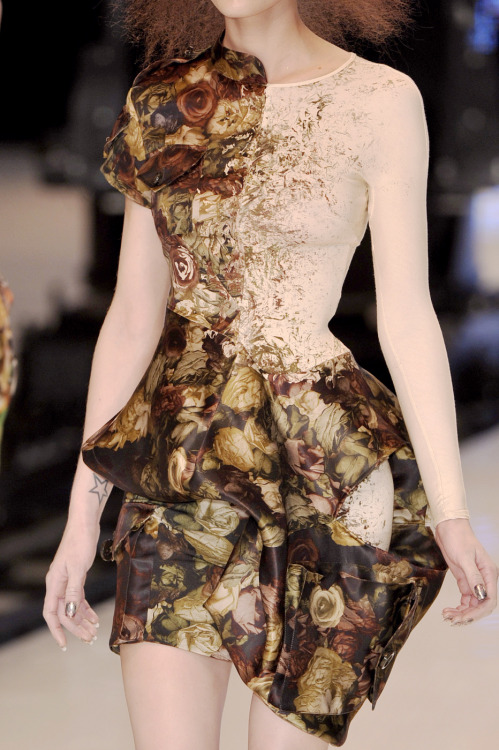
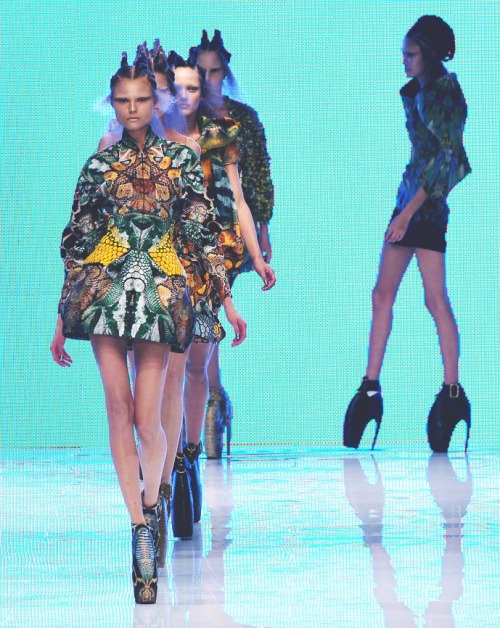
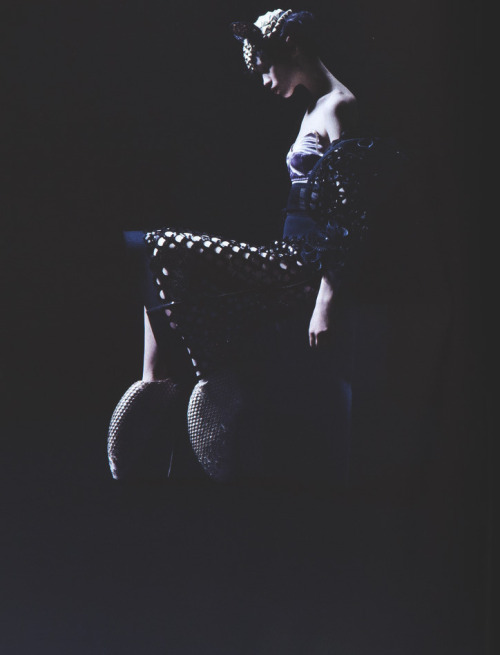
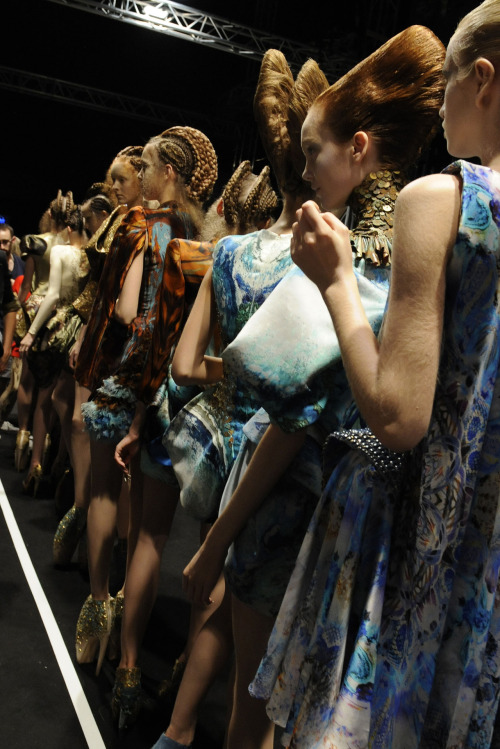
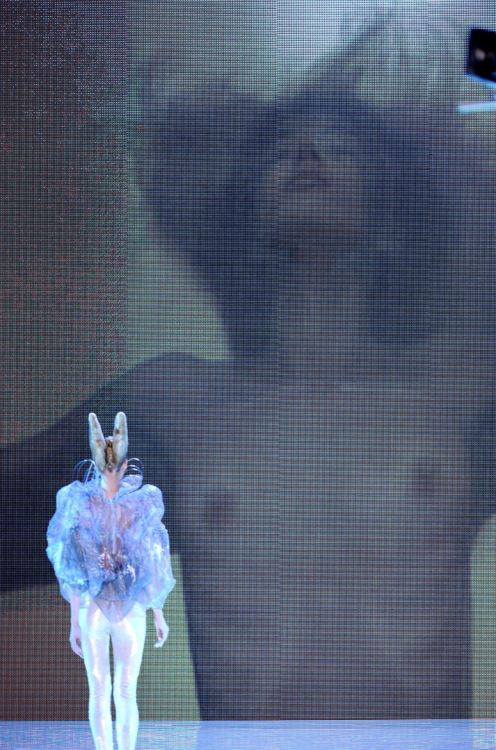
No comments:
Post a Comment